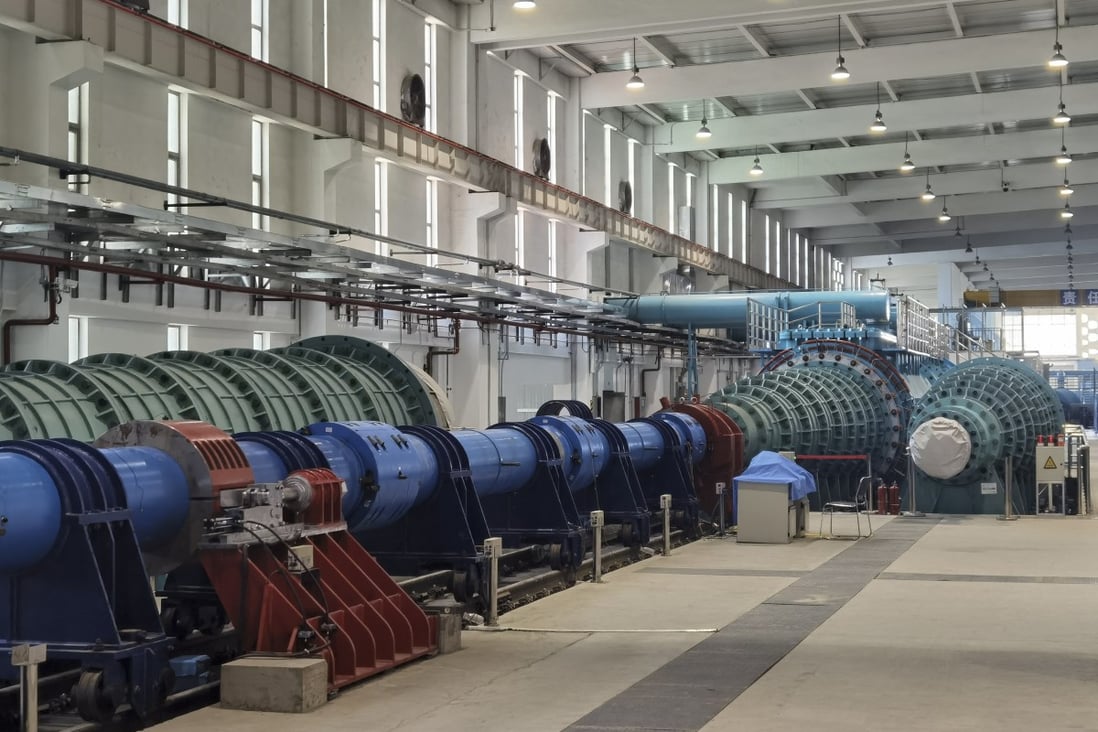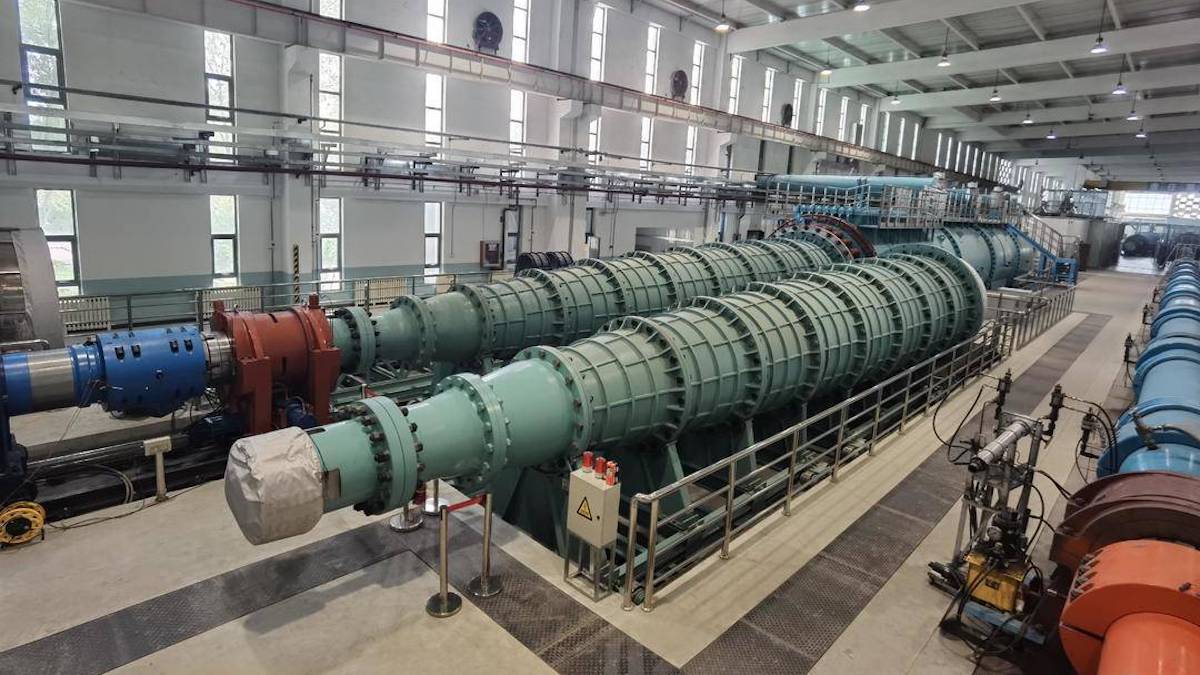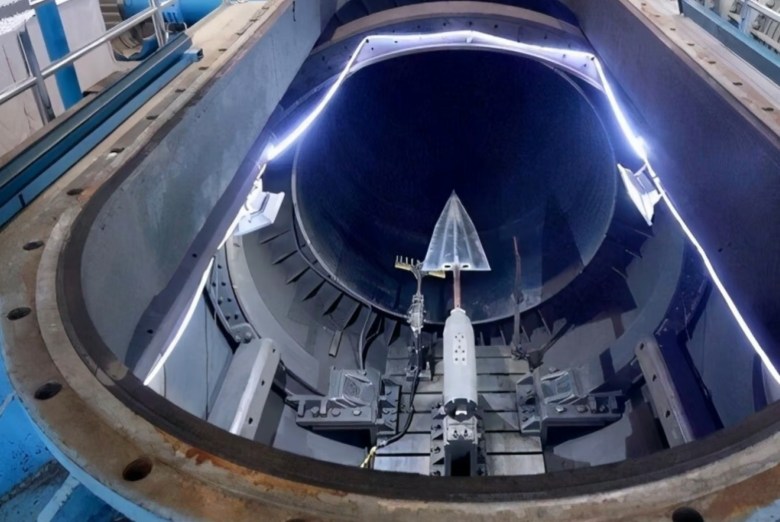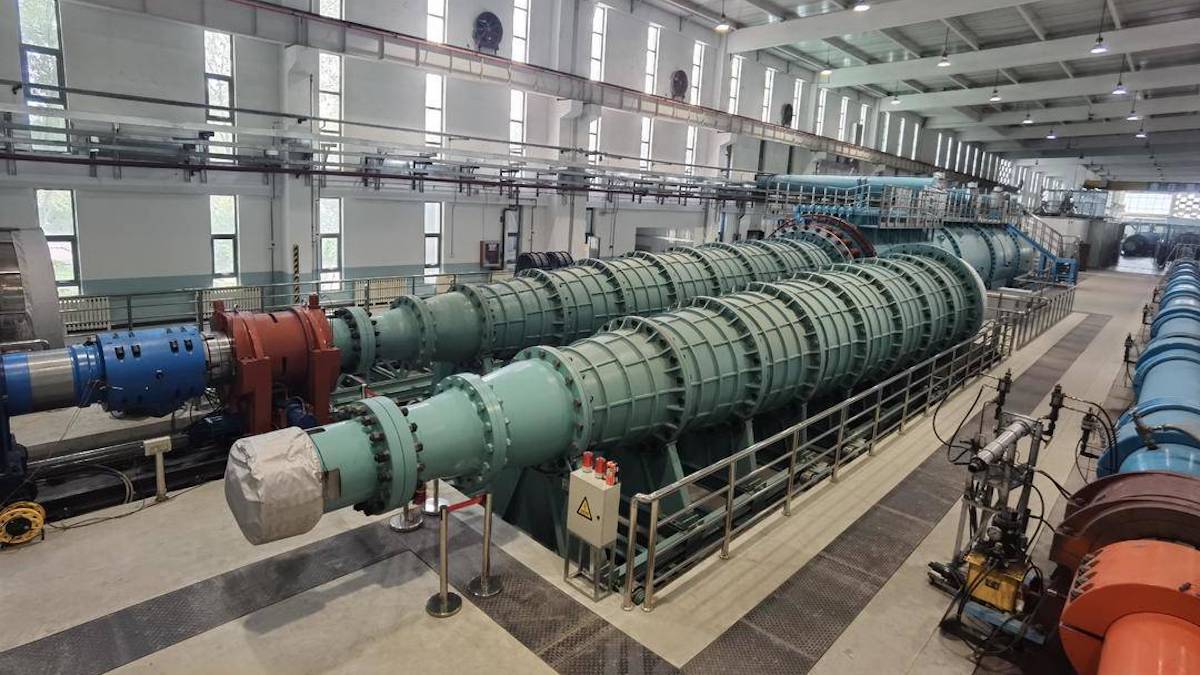beijingwalker
ELITE MEMBER

- Joined
- Nov 4, 2011
- Messages
- 65,191
- Reaction score
- -55
- Country
- Location
China now has the world’s most powerful hypersonic wind tunnel
- The ‘world-leading’ JF-22 can simulate extreme flight conditions at Mach 30
- Facility will play key role in developing Beijing’s hypersonic weapons programme and passenger air travel
Published: 10:00pm, 6 Jun, 2023

The JF-22, located in Beijing, can simulate extreme flight conditions at 30 times the speed of sound. Photo: handout
After five years of construction, the most powerful wind tunnel on the planet has roared to life in China’s capital – a facility that will be key to advancing Beijing’s hypersonic ambitions.
Located in the mountainous Huairou district of northern Beijing, the JF-22 wind tunnel is 4 metres (13 feet) in diameter and can generate air flow speeds up to 10km (6.2 miles) per second, according to a final evaluation conducted on May 30.
That makes it the largest and fastest wind tunnel in the world, capable of simulating hypersonic flight conditions up to Mach 30, according to the Institute of Mechanics, the owner of the facility.
The tunnel will “support the research and development of China’s space transport system and hypersonic aircraft,” the institute said in a statement on Friday.
By comparison, the Mach 10 tunnel at Nasa’s Langley Research Centre in the United States, a primary hypersonic test facility, has a test section diameter of nearly 0.8 metres.
A larger test section enables researchers to put larger aircraft models or even an entire weapon into the wind tunnel to obtain more accurate flight data.
Most intercontinental missiles are under 4 metres in diameter.
The JF-22 is integral to goals set out by the Chinese government to be achieved by 2035. By then, Beijing hopes to deploy a fleet of hypersonic aircraft that can carry thousands of passengers into space each year, or reach anywhere on the planet within an hour.
But such aircraft must be able to withstand the extreme heat and pressure of hypersonic flight, while maintaining stable flight trajectories and a safe, comfortable environment for passengers.
At five times the speed of sound, air molecules around an aircraft begin to become highly compressed and heated, leading to a phenomenon known as molecular dissociation.
The air molecules break apart into their constituent atoms, which can then react with each other to form new chemicals.
Understanding the complex physics of flows associated with molecular dissociation is crucial for the development of hypersonic aircraft, according to the institute.
By studying the phenomena in a laboratory environment using facilities like wind tunnels, researchers can learn how hypersonic vehicles interact with their surrounding environment, and develop new technologies to improve their performance and safety.
Wind tunnel testing can also help identify potential problems or design flaws before the vehicle is actually built and flown, reducing the risk of failure or accidents.
According to some estimates, simulating the conditions of a Mach 30 flight inside a large tunnel, requires power comparable to that produced by the Three Gorges dam – a practical impossibility.
So, Professor Jiang Zonglin, the lead scientist for the JF-22 project, came up with an innovative solution.
To create the high-speed air flow needed for hypersonic testing, Jiang proposed a new type of shock wave generator called a “reflected direct shock wave driver”.
In traditional hypersonic wind tunnels, air flow is generated by a process called “expansion,” in which high-pressure gas is rapidly released into a low-pressure chamber, creating a supersonic flow. However, this method has limitations when it comes to generating the extremely high speeds and temperatures needed for hypersonic testing.
Jiang’s reflected shock wave driver overcomes these limitations by using a series of precisely timed explosions to generate a series of shock waves that reflect off each other and converge at a single point.
The resulting intense burst of energy is used to drive the air flow in the wind tunnel at extremely high speeds.
The innovation has paved the way for more advances by bringing more accuracy and efficiency to the study of hypersonic flight, according to the institute.
Using explosives to generate energy in a wind tunnel comes with lots of drawbacks – they are dangerous for both humans and equipment, and they produce noise and air pollution.
But an explosive shock tunnel allows for a very rapid and intense burst of energy, necessary for driving the air flow in the wind tunnel at extremely high speeds.
And because the energy source is generated by explosions rather than a fixed mechanical system, the intensity and timing of the explosions can be tailored to create a variety of air flows for testing different types of vehicles or materials.
A team of 16 independent experts hired by the National Nature Science Foundation of China evaluated the JF-22 in several key areas, including effective testing time, total temperature, total pressure and nozzle flow field size.
They concluded that the JF-22 had achieved “world leading” performance. “The JF-22 wind tunnel, together with the JF-12 wind tunnel, forms the only ground-based experimental platform that covers all flight corridors for near-space vehicles,” the institute said.
The JF-12 wind tunnel, which has been operating since 2012 at the same site as the JF-22, is designed to simulate flight conditions for vehicles travelling at speeds up to Mach 9.
Together, the two wind tunnels can be used in a variety of ways to test hypersonic weapons and aircraft – the JF-12 simulates flight conditions at lower speeds and temperatures, while using the JF-22 replicates more extreme conditions at higher speeds and temperatures.
By combining the data, researchers can better understand how different materials and designs perform under a range of flight conditions, and use that information to improve the performance and reliability of hypersonic weapons or aircraft.
The facilities could put China years ahead of its competitors, according to Jiang’s team.

China now has the world’s most powerful hypersonic wind tunnel
The world-leading JF-22 can simulate extreme flight conditions at Mach 30 and will play key role in developing Beijing’s hypersonic weapons programme and passenger air travel.





